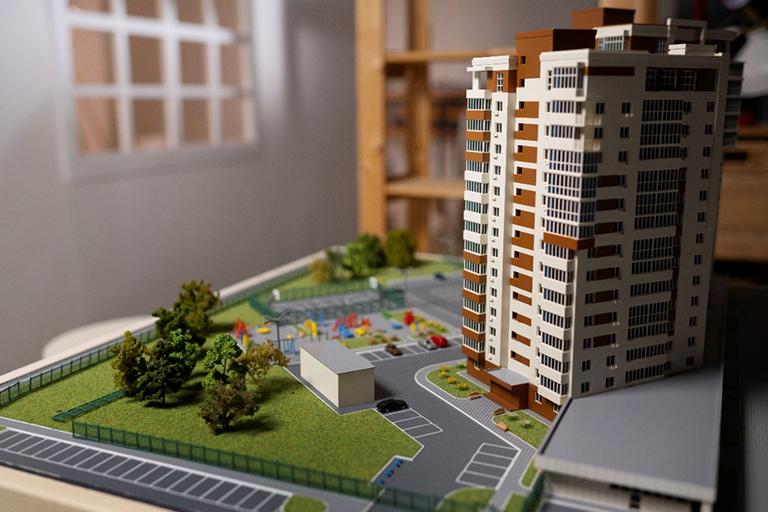
In the realm of real estate, understanding the nuances of measurement terminologies is paramount for prospective homebuyers. Two such terms that often cause confusion are Carpet Area and Super Built-Up Area. In this comprehensive guide, we will delve into the intricacies of these measurement terminologies, elucidating their definitions, calculation methods, and relevance in the context of real estate investments.
Introduction to Carpet Area & Super Built-Up Area:

Before delving into the specifics, let’s first understand the basic definitions of Carpet Area and Super Built-Up Area.
Carpet Area

Carpet Area refers to the actual usable area within the walls of an apartment, excluding common spaces such as staircases, corridors, and lobby areas. It represents the area where one can lay a carpet from wall to wall, thus the name “Carpet Area”. A carpet area is the net usable area within the walls of a property, excluding common areas such as staircases, lobbies, and lifts. It is the actual area where you can spread out your carpet and utilize it for living or other purposes. Carpet area holds significant importance in real estate transactions. It directly affects the pricing of a property and the overall comfort it offers to the occupants. Prospective buyers often prioritize properties with larger carpet areas as it translates to more liveable space.
Super Built-Up Area:

On the other hand, Super Built-Up Area encompasses not only the Carpet Area but also the proportionate share of common areas such as corridors, lifts, staircases, and amenities like swimming pools, gardens, and clubhouses. It includes the entire area covered by the apartment, including walls and balconies. The concept of super built-up area is commonly used in multi-story residential buildings and commercial complexes. Builders and developers often use super built-up area to calculate the cost of a property, including the cost of common amenities and facilities. Buyers should be aware of the difference between carpet area and super built-up area to make informed decisions while purchasing a property, as the latter may inflate the total cost without necessarily adding to the usable living space.
Carpet Area Calculation

Calculating Carpet Area is relatively straightforward. It involves measuring the area enclosed within the walls of the apartment, excluding any common spaces or amenities. The resulting area represents the actual usable space available to the homeowner. Carpet area calculation involves measuring the usable area within a property’s walls, excluding common areas like corridors and lobbies. To calculate:
- Measure room dimensions, excluding wall thickness.
- Calculate room areas.
- Sum up individual room areas for total carpet area.
Accuracy is crucial for property valuation and utility assessment.
How to Calculate Super Built-Up Area?

Calculating Super Built-Up Area is a bit more complex and involves multiple components. Firstly, the Carpet Area is determined as mentioned earlier. Then, additional areas such as common spaces, amenities, and proportionate share of the land are added to arrive at the Super Built-Up Area. Calculating the super built-up area involves summing the carpet area with a proportionate share of common areas. To calculate:
- Determine the carpet area by measuring the usable space within the walls of each unit.
- Add the proportionate share of common areas, including corridors, staircases, and amenities.
- Multiply the common area’s total square footage by the unit’s percentage share to obtain the additional area.
- Sum the carpet area and the additional area to obtain the super built-up area.
Understanding this calculation helps buyers assess the total space and associated costs accurately.
What is the Loading Factor?

The Loading Factor, also known as the Built-Up Area Ratio, is the ratio between the Super Built-Up Area and the Carpet Area. It represents the extent to which the Super Built-Up Area exceeds the Carpet Area. The Loading Factor varies depending on factors such as the design of the building, amenities offered, and local regulations. It’s the percentage of common areas and amenities added to the carpet area to calculate the super built-up area. It represents the additional space allocated for shared facilities such as corridors, staircases, elevators, and recreational areas like swimming pools or gyms. The loading factor varies depending on the project and typically ranges from 20% to 40%. Understanding the loading factor is crucial for buyers to comprehend the total space they are paying for and to compare different properties accurately.
Transparency and Documentation

Transparency and documentation regarding carpet area and super built-up area are vital for real estate transactions. Sellers should clearly disclose these areas in marketing materials and agreements, ensuring accuracy in measurements and compliance with building codes. Providing buyers with comprehensive documentation, including floor plans and calculation sheets, fosters trust and clarity. It’s important for buyers to understand the difference between carpet area and super built-up area to make informed decisions. Pricing should be transparent, based on carpet area, and mechanisms for dispute resolution should be in place for fairness and trust-building. When investing in real estate, it is crucial to ensure transparency and clarity regarding the measurement terminologies used. Homebuyers should carefully review the documentation provided by developers, including floor plans, layout diagrams, and agreements, to ascertain the exact Carpet Area and Super Built-Up Area of the property.
Conclusion
In conclusion, understanding the distinction between Carpet Area and Super Built-Up Area is crucial for making informed real estate investments, particularly in esteemed projects like The Pearl by Auro Realty. Situated in a prime location, It’s offers luxurious residences with meticulously designed spaces. While Carpet Area denotes the actual usable space within an apartment, Super Built-Up Area encompasses additional common areas and amenities, enhancing the overall living experience. Prospective homebuyers looking to invest in The Pearl can benefit from comprehending the calculation methods and documentation processes associated with these measurement terminologies. This understanding ensures transparency and clarity in property transactions, empowering buyers to make well-informed decisions and secure their dream homes at The Pearl by Auro Realty.
For those seeking luxury properties in Hyderabad or 4 BHK flats in Hitech city Hyderabad, it is advisable to prioritize developers who provide transparent and comprehensive information regarding Carpet Area and Super Built-Up Area, ensuring a seamless and informed homebuying experience.




